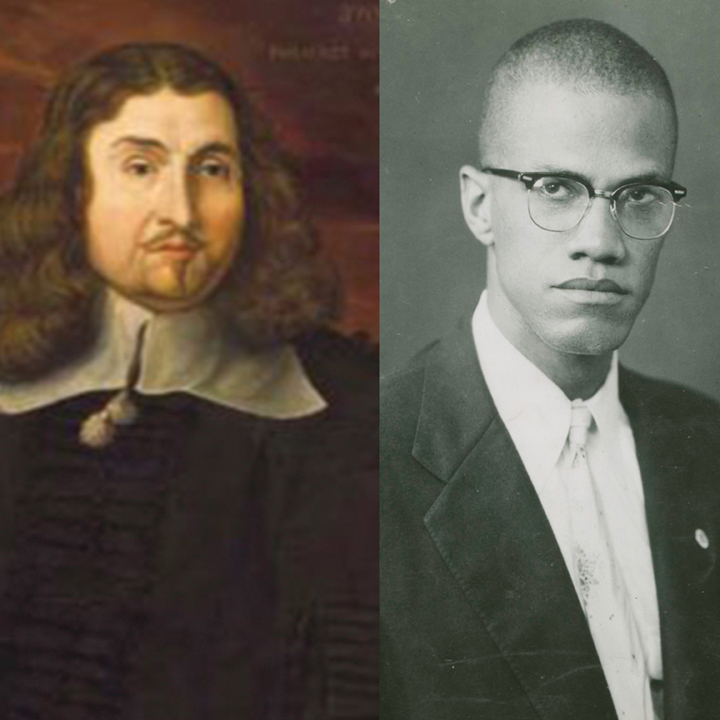Telling the history of Roxbury, Massachusetts in SO many pictures
Let us imagine a time warp where the 17th-century preacher and evangelist John Eliot is saying “good day” to 20th-century activist Malcolm Little, aka Malcolm X, while on his way to the First Church in Roxbury meetinghouse in the center of town. They each formed their identity in Roxbury, Massachusetts, Eliot as an evangelist to the Nipmuc and other tribes and pastor at First Church, Little as a future activist while living in the house of his half-sister, Ella Little-Collins, on Dale Street. Each man would make his mark in history inspired by religion to change society in markedly different ways.
This juxtaposition demonstrates the challenge of interpreting 388 years of history in Roxbury, one of the six founding towns of the Bay Colony. For the first 138 years of its existence, Roxbury grew from a village to a city, before the citizens voted to be it absorbed by its wealthy neighbor, the “Athens of the East,” Boston.
The image research task was daunting, 87 individual images encompassing the entire range of western image making; manuscripts, engravings, oil painting, watercolors, pastels, as well as that standby, photography. The sources were equally diverse, 16 different collections, from art museums to postcard collections, plus commissioned illustrations and photography. And this is just the gallery graphics, there are another 80 or more images in the time-traveling media programs and interviews.
Our first featured image hails all the way from the Chicago Institute of Art, “Meetinghouse Hill” by John Ritto Penniman. Why had this painting, created by the man who designed the City of Boston seal in 1822, ended up in the Windy City? The unfortunate geographic dislocation is now corrected, a reproduction will now hang in the Dillaway-Thomas House. You can see the House, it is visible in the painting on the right.
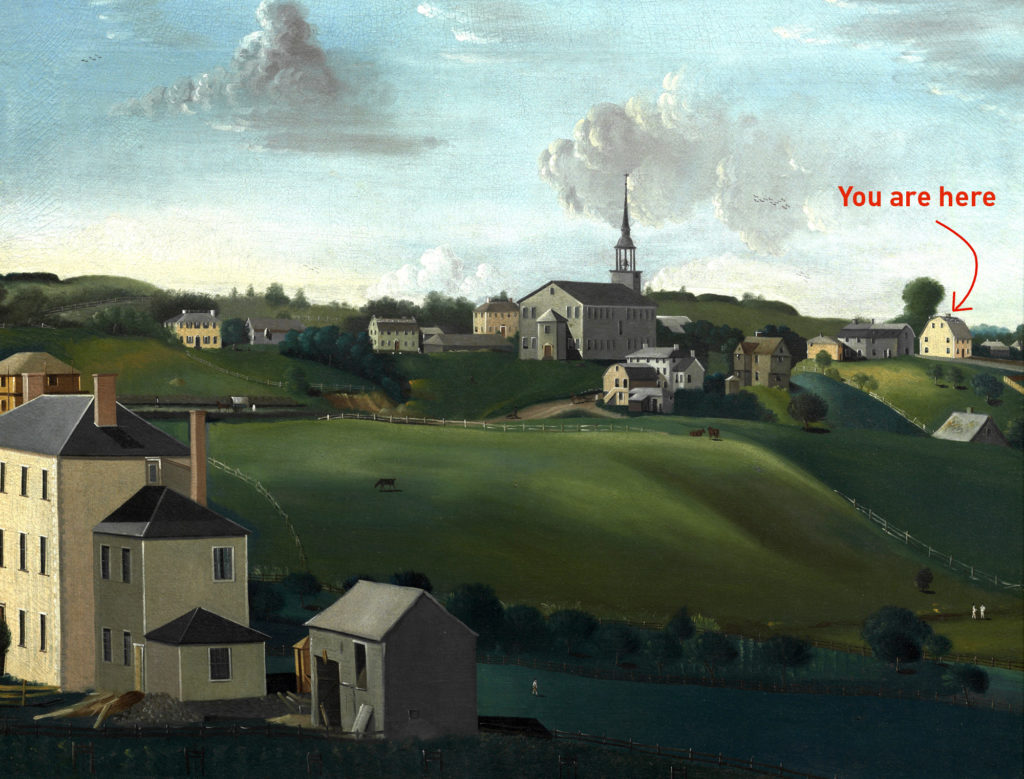
You may heard about the Reverend John Eliot, “Apostle to the Indians”—but how about the venerable General John Thomas who directed the southern wing of militia blocking the British troops from marching out of the besieged city of Boston? He appears kindly, if not strikingly handsome, in this portrait. A devoted husband, it is through letters to his wife Hannah we know much about the events of March 1776, when he oversaw the occupation of the nearby Dorchester Heights, forcing the British to evacuate Boston.

Our next topic was more difficult to illustrate, it is the typical interpretive conundrum of finding first-hand non-pejorative illustrations of the disenfranchised. Where will we locate first-hand images of African American revolutionary war soldiers, even just one? Never mind that on the spot illustrations of anything from the Revolutionary War is rare. This was very important, Roxbury is the center of African American culture in Boston. It turns out that the most requested item, according to Peter Harrington of the Anne S.K. Brown Military Collection at Brown University, is this watercolor of soldiers and militia, possibly at the surrender of the British at Yorktown. The Rhode Island Militia had a contingent of African Americans, one of who posed for this picture by a French artist.
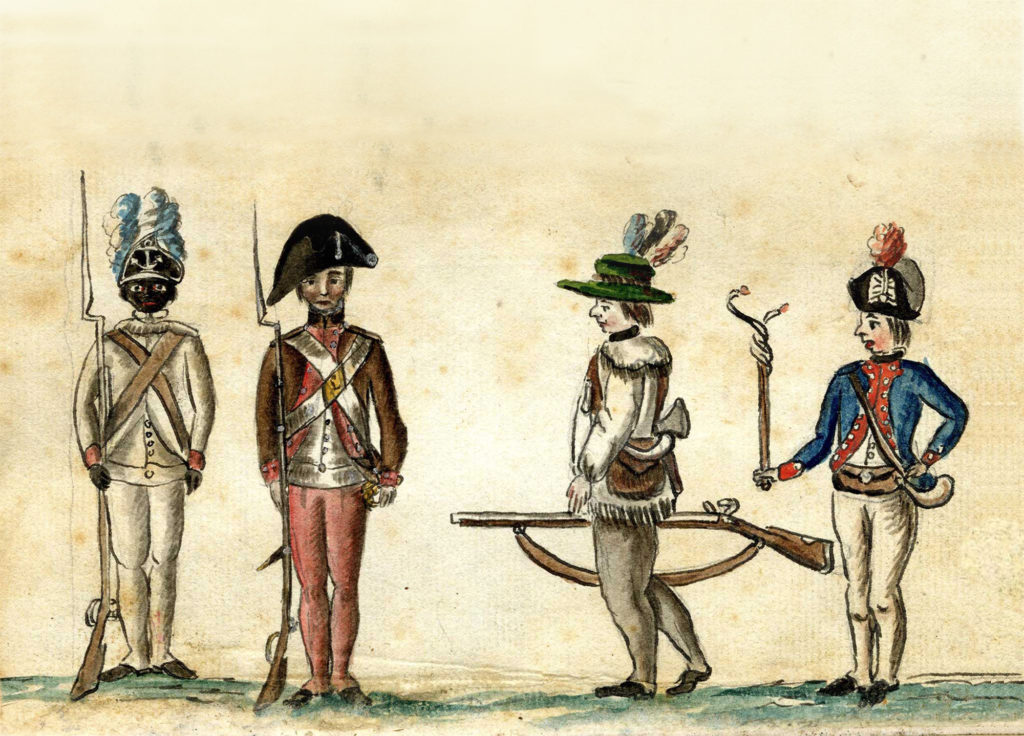
Moving into the 1830s, the namesake of our noble House, Charles K. Dillawa,y and wife Martha presided over a busy household that included three children, two sisters-in-law, a cousin Mary who gave music lessons, and a domestic staff. Mr. Dillaway was an enlightened man, publishing books on Roman Antiquities, helping found the Boston Society of Natural History, and teaching young women at his home who we barred from seeking higher education. Oh, and of course, his day job was headmaster of Boston Latin.
It is no wonder he would play host to the first ever Japanese exchange student program. Don’t let the swords distract you, the samurai class was one of the most progressive in mid-19th century Japan. The fellow on the left, with the distinct profile, Hanabusa Yoshimoto, went on to direct the Japanese Red Cross. The other men would also go on to leadership positions in Japan.
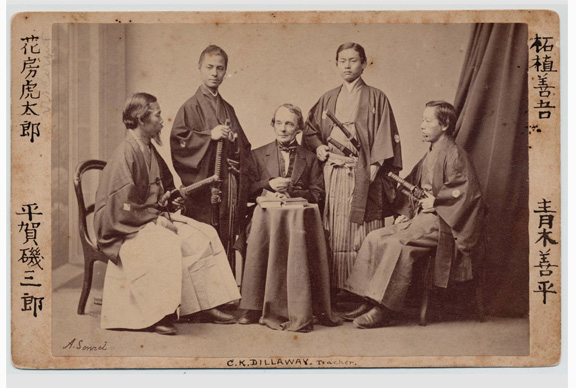
By 1868 the industrial revolution caught up with Roxbury and to cope with the services needed to care for its growing immigrant population Roxbury merged with Boston. To represent this pivotal moment we selected this birds-eye view of the July 4th, 1870 celebration in Boston. See the re-enactors on Boston Common? No hatch shell and duck boats yet. This is from the versatile collection at the Boston Public Library, maps and drawings from their collection make up a quarter of the images used in the exhibit.
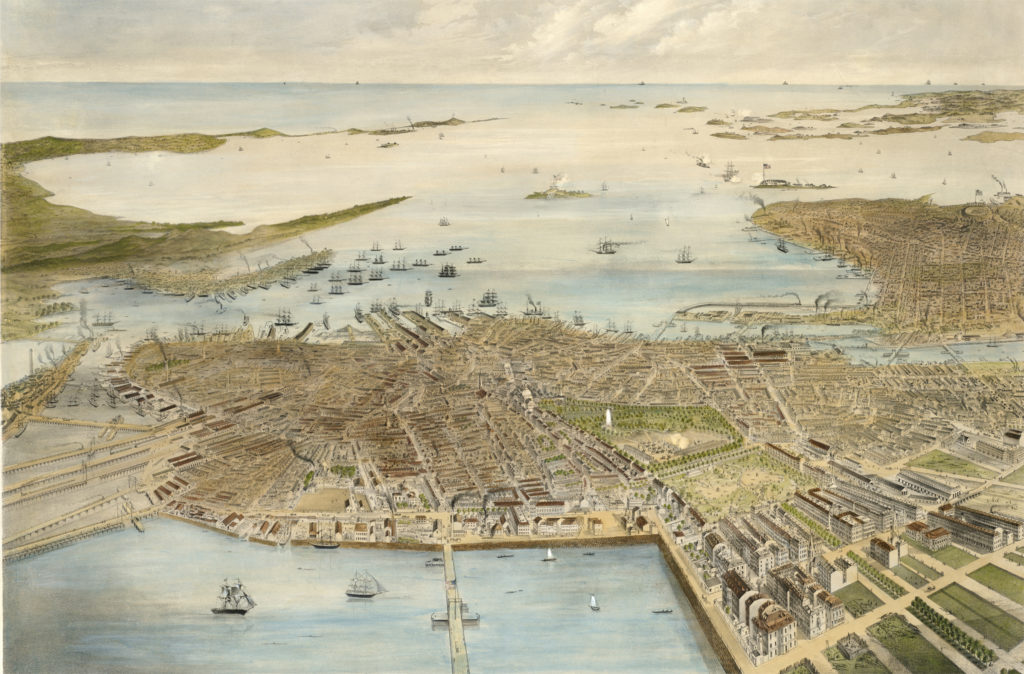
This takes us up to the 20th century, and our work just got harder, the number of people and nationalities filling up Roxbury was tremendous, for instance, why is there a Pompeii Street no one goes to Roxbury for Italian food! But in the early 20th century there was once a thriving community living and serving marinara sauce in the neighborhood of Roxbury near today’s Newmarket District. The Latvians too, yes, really, appeared as trouble makers in Roxbury, see Dennis Lehane’s “The Given Day,” The Irish, (think Mayor Curley) Germans, and Eastern European Jews are all part of Roxbury’s heritage.
Now we are in the mid-twentieth century and African Americans finding opportunities in our segregated society non-existed before because of the manpower shortages caused by World War II. This theme was eloquently illustrated by famous hometown artist John Wilson. His drawing was explicitly made to address this issue. Images like “Streetcar Scene” demonstrate the power of fine art to communicate interpretive messages in a manner more poignant than commissioned illustration.
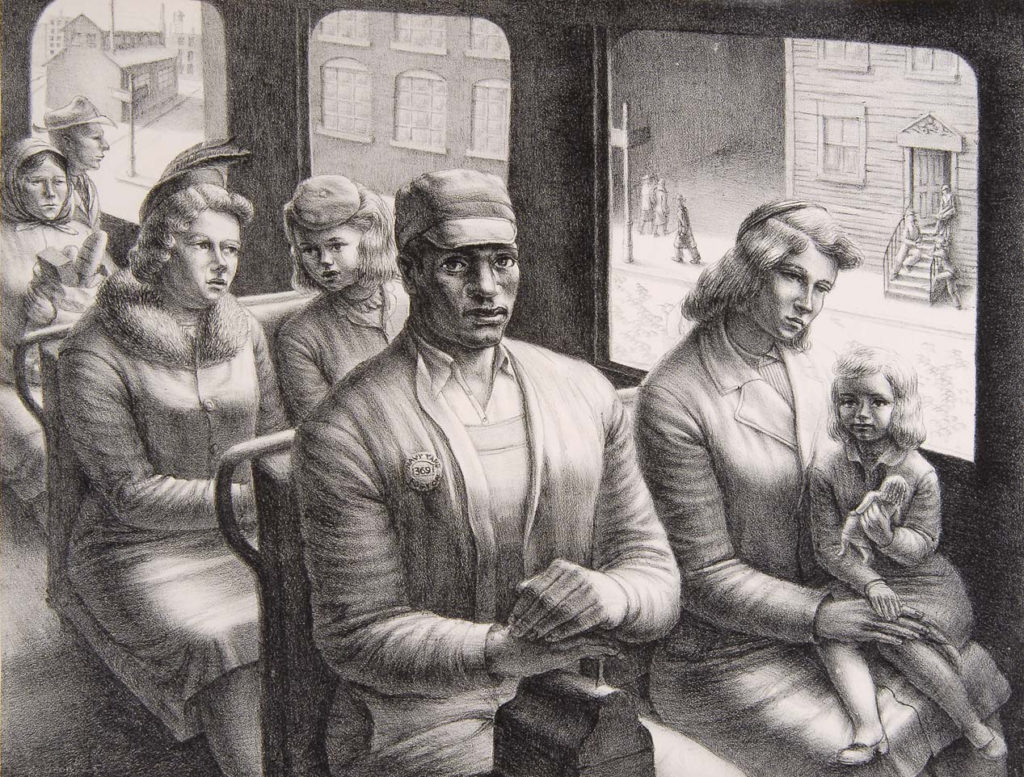
Finally, this photo from the Associated Press captures a historic moment when Roxbury is recognized as a hub for African American political leadership. Martin Luther King Jr. held his first rally outside of the south in Roxbury, leading thousands on a march to the Boston Common where he led a rally seeking fair wages and workers rights.
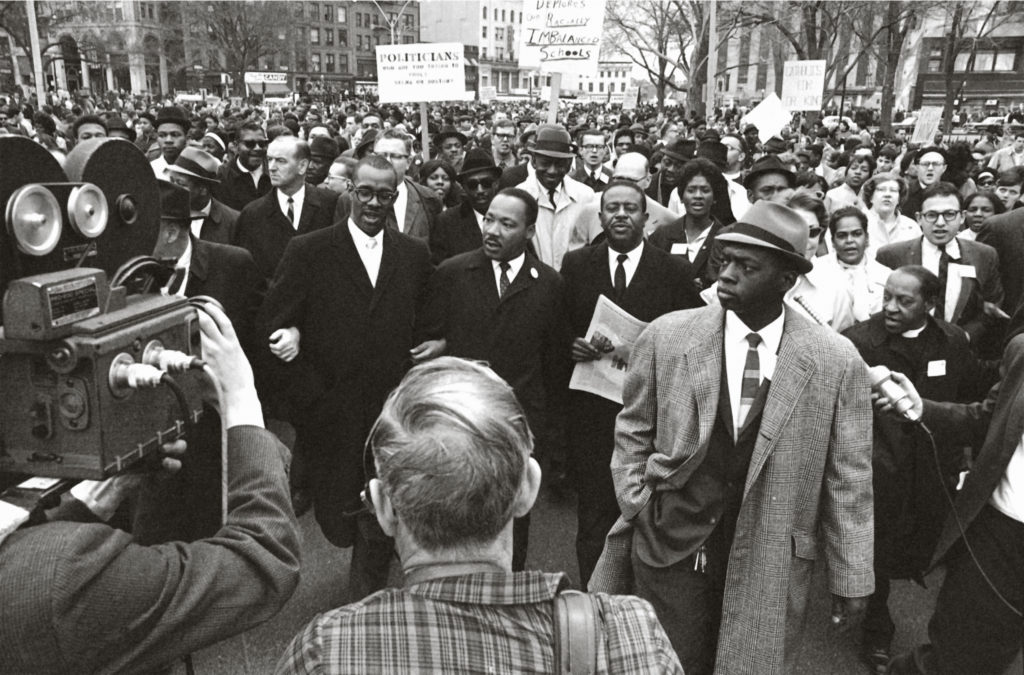
Members of the Roxbury Historical Society identified several other people in the photograph whom they knew personally; Roxbury has activism in its DNA!
When the exhibit opens later this spring, Roxbury residents might not realize the host of institutions that have been marshaled to tell their neighborhood’s story. They provide the first-ever comprehensive permanent exhibit of the city that was, and the vibrant neighborhood that is, Roxbury, Massachusetts.


